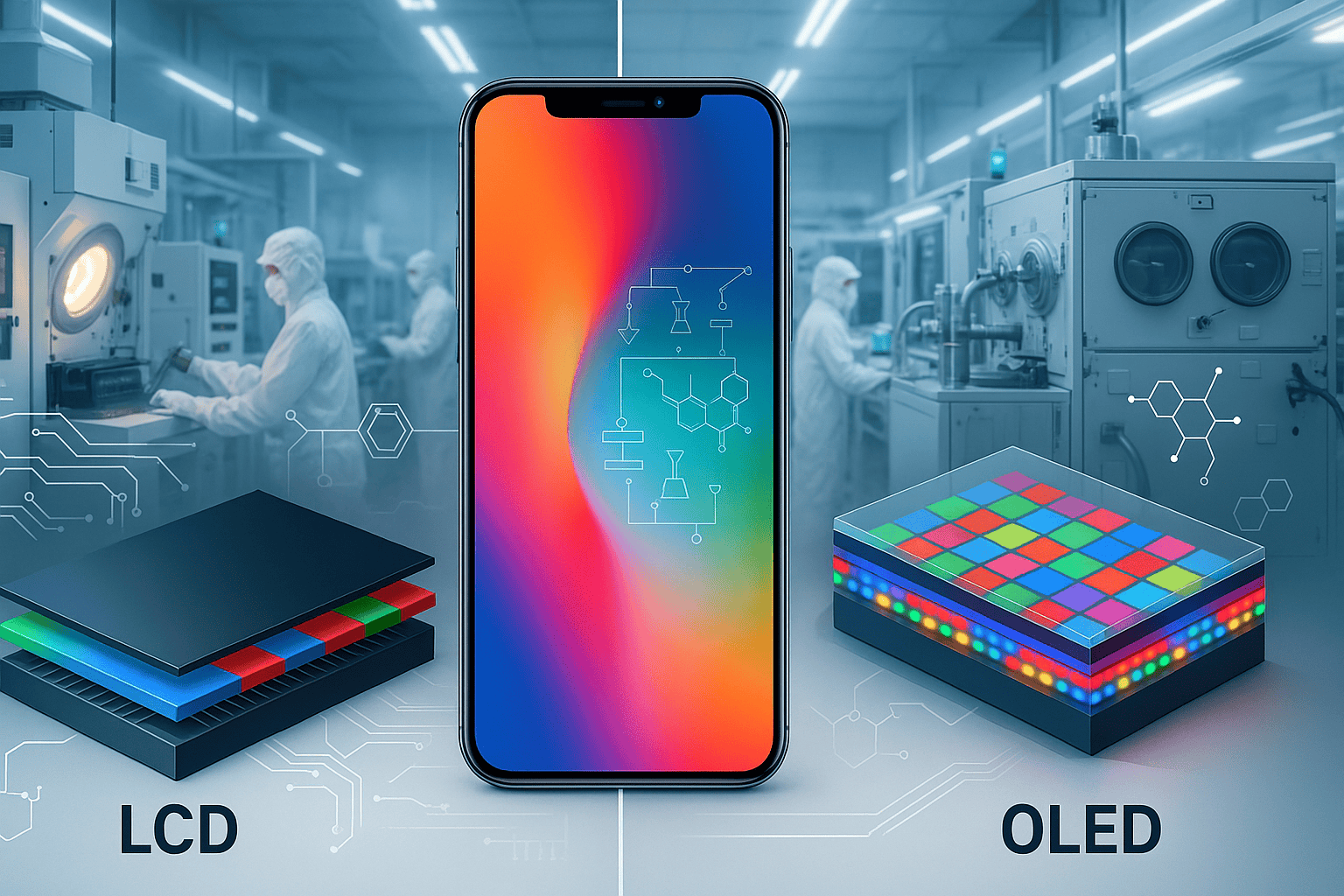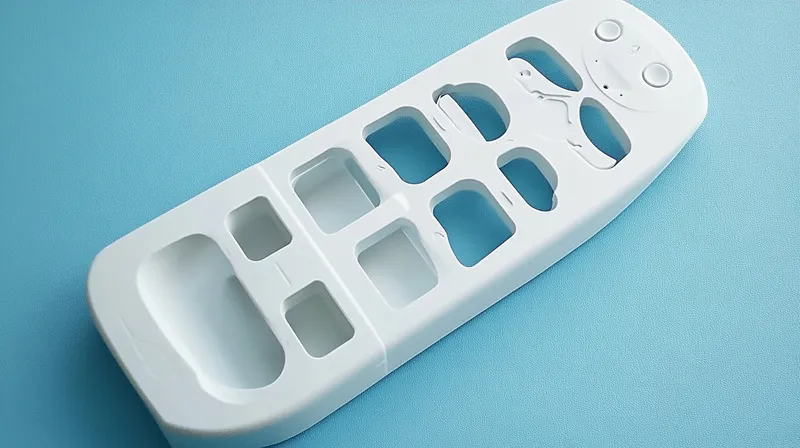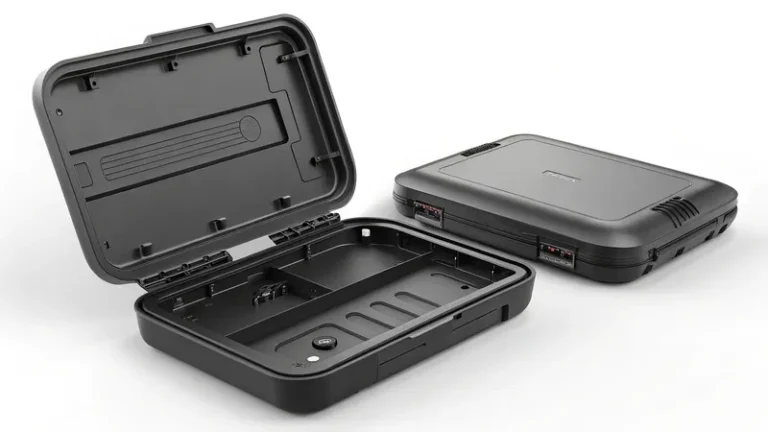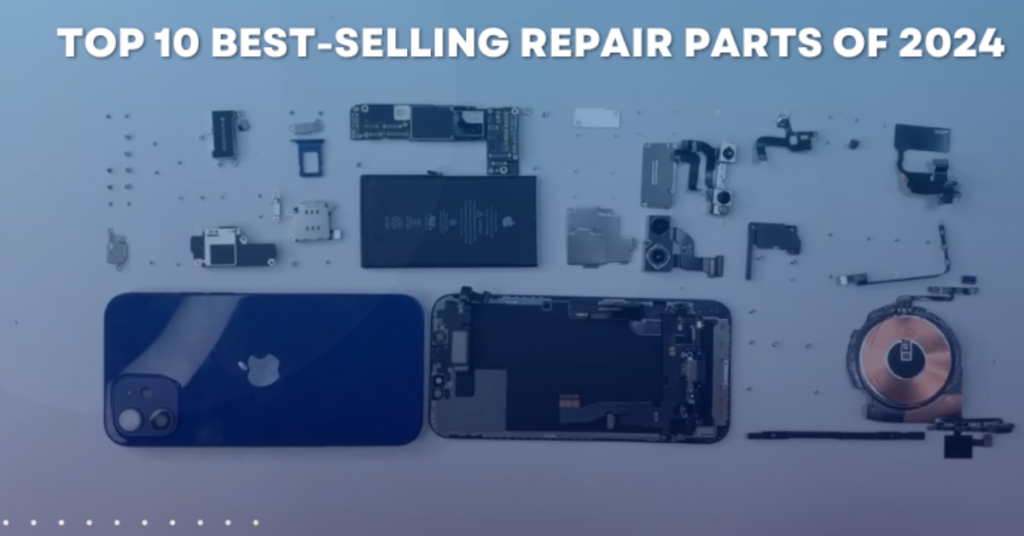Featured Summary
Mobile phone screen manufacturing is an extremely complex industrial process involving hundreds of precision procedures and a production cycle lasting over 20 days. 2024 marked a significant turning point in the global smartphone display market, with OLED technology surpassing traditional LCD for the first time, capturing 51% of market share. This article will take you deep into the complete manufacturing process from raw materials to finished products, including the process differences between LCD and OLED mainstream technologies, and the latest flexible screen manufacturing techniques.

Whether you're a technology enthusiast, industry professional, or investor, this detailed guide will provide you with professional insights into the mobile screen manufacturing industry.
Article Navigation
- LCD Liquid Crystal Screen Manufacturing Process
- OLED Organic Light-Emitting Screen Manufacturing
- Flexible Screen Manufacturing Breakthrough
- Production Environment and Quality Control
- Future Development Trend Analysis
LCD Liquid Crystal Screen Manufacturing Process
Why Is LCD Manufacturing So Complex?
LCD liquid crystal display manufacturing is hailed as the "artwork" of modern industry, requiring hundreds of precision procedures to be completed in an extremely clean environment. The entire manufacturing process is divided into three core stages: array process, cell process, and module process.
TFT Array Substrate Process: Manufacturing the "Brain" of the Screen
The TFT (Thin Film Transistor) array is the control core of LCD screens, acting like the screen's "brain" controlling the display of each pixel.

Glass Substrate Preprocessing The manufacturing process begins with ultra-clean glass substrates. Factories use specialized chemical cleaning agents to deep-clean the glass, ensuring the surface reaches semiconductor-level cleanliness. Any minute contamination could result in the entire screen being scrapped.
Five-Cycle Photolithography Process TFT manufacturing requires five precise photolithography process cycles:
- Photoresist Coating - Applying photosensitive materials to the substrate
- Precision Exposure - Using ultraviolet light for pattern transfer
- Development Processing - Removing excess photoresist material
- Etching Processing - Precisely removing unwanted thin films
- Stripping and Cleaning - Completely removing residual substances
Each cycle requires sub-micrometer precision control, which explains why LCD manufacturing equipment is so expensive.
Color Filter Process: The Secret of Color
Color filters are responsible for creating the screen's brilliant color performance, a process like "painting" on glass.
Black Matrix Creation First, the black matrix structure is created. These black grid lines prevent light crosstalk between different pixels, ensuring image clarity and contrast.
RGB Three-Color Layer Preparation Next, red, green, and blue filter layers are created separately. Each color requires individual photolithography processes, ensuring color purity and thickness uniformity. Modern factories require color accuracy within a ±2% error range.

Cell Assembly Process: The Art of Assembly
The cell process is the key step in combining two independently manufactured substrates into a complete liquid crystal unit.
Alignment Film Treatment Special alignment films are applied to both substrates, then rubbed. This seemingly simple step actually determines the initial alignment direction of liquid crystal molecules, directly affecting display performance.
Liquid Crystal Injection Process Liquid crystal material is precisely injected into the tiny gap between the two substrates under vacuum conditions. The gap thickness is typically only a few micrometers, and the injection process must ensure completely uniform liquid crystal distribution without bubbles.
OLED Organic Light-Emitting Screen Manufacturing
OLED Technology Revolution: Advantages of Self-Emission
Unlike LCDs that require backlighting, OLED technology allows each pixel to emit light independently, resulting in higher contrast, faster response times, and lower power consumption. However, this also makes the manufacturing process more complex.
Backplane Process: Precision Circuit Construction
OLED backplane processes use Low Temperature Poly-Silicon (LTPS) technology to create drive circuits on flexible or rigid substrates.
Multi-Layer Thin Film Stacking Through film formation, exposure, etching, and other processes, different patterned and material thin film layers are stacked on the substrate. Each layer must be precisely aligned with errors not exceeding 1 micrometer.
Organic Material Evaporation: Core OLED Technology
This is the most critical and challenging aspect of OLED manufacturing.

High Vacuum Evaporation Environment The evaporation process must be conducted in an ultra-high vacuum environment of 10^-6 Pascal, which is "cleaner" than space. Any presence of oxygen or moisture will seriously affect OLED device lifespan.
Precision Fine Metal Mask Technology Fine Metal Masks (FMM) are used to precisely evaporate organic light-emitting materials to specified locations. The most advanced masks can achieve precise patterns at 2K or even 4K resolution.
Multi-Layer Organic Structure OLED devices contain multiple organic functional layers:
- Hole transport layer
- Emissive layer
- Electron transport layer
- Electron injection layer
Each layer requires independent evaporation processes, with total thickness of only a few hundred nanometers.
Thin Film Encapsulation: The Art of Protection
OLED devices are extremely susceptible to damage from water vapor and oxygen, requiring tight encapsulation protection.
Multi-Layer Barrier Structure Modern OLEDs use thin film encapsulation technology, employing multi-layer combinations of silicon nitride and organic buffer layers to reduce water vapor transmission rates below 10^-6 g/m²/day.
Flexible Screen Manufacturing Breakthrough
Flexible Substrate Revolution: From Glass to Plastic
The emergence of flexible OLEDs has completely changed display technology application scenarios, but manufacturing difficulty has also increased significantly.

Polyimide Substrate Technology Flexible OLEDs use polyimide (PI) films to replace traditional glass substrates. PI materials have excellent flexibility and high-temperature resistance, but manufacturing processes are more complex.
Peeling Process Innovation To ensure manufacturing precision, PI films and OLED devices are typically first manufactured on glass carriers, then the glass substrate is peeled off. This process ensures quality while reducing costs.
Bending Durability: Design That Withstands Testing
Strict Testing Standards Flexible screens must pass over 200,000 bending tests, with each bend checking:
- Display uniformity
- Electrical characteristic stability
- Mechanical structure integrity

Production Environment and Quality Control
Clean Rooms: Cleaner Than Operating Rooms
Mobile phone screen manufacturing requires Class 10 or higher clean rooms, meaning no more than 10 particles larger than 0.5 micrometers per cubic foot of air.

Fully Automated Production Lines Modern display factories use highly automated production lines where the entire process from raw material input to finished product output requires almost no human intervention, greatly reducing contamination risks.

Quality Inspection: Pursuit of Zero Defects
Automated Optical Inspection (AOI) Factories use advanced machine vision systems to detect product defects in real-time, capable of identifying flaws as small as 1 micrometer. Each screen undergoes dozens of strict inspections.
Reliability Testing System
- Image retention testing
- Color shift detection
- Brightness uniformity verification
- Environmental adaptability testing
- Mechanical strength testing
Future Development Trend Analysis
Technology Development Directions
Higher Resolution and Refresh Rates Future mobile phone screens will popularize 4K resolution and 144Hz high refresh rates, bringing users more detailed and smooth visual experiences.
Under-Display Integration Technology Under-display cameras, under-display fingerprint recognition, and other technologies will enable screens to achieve higher integration, truly realizing "full-screen" designs.
Industry Competition Landscape
Rise of Chinese Manufacturing In 2024, Chinese display manufacturers' share in the global AMOLED market reached 45%, with companies like BOE and CSOT challenging the traditional advantages of Korean manufacturers.
Continuous Cost Reduction As manufacturing processes mature and capacity expands, flexible OLED screen costs are rapidly declining, expected to popularize in mid-range smartphone markets by 2025.
Emerging Application Fields
Flexible display technology will open up more innovative applications:
- Foldable smartphones
- Rollable TV screens
- Smart wearable devices
- Automotive display systems
Measured Data: Key Indicators of Mobile Screen Manufacturing
According to industry test data, different screen technologies show significant differences in key performance indicators:
Response Time Comparison
- TN-LCD: 1-5 milliseconds
- IPS-LCD: 5-16 milliseconds
- AMOLED: 0.1 milliseconds
- Flexible OLED: 0.1 milliseconds
Power Consumption Testing When displaying pure black images, OLED screens consume almost zero power, while LCD screens still require backlight systems to operate, showing obvious power advantages.
Bending Test Results Mainstream flexible screen product bending test standards:
- Samsung Galaxy Fold series: Over 200,000 times
- Huawei Mate X series: Over 150,000 times
- Xiaomi foldable screens: Over 100,000 times
Conclusion
Mobile phone screen manufacturing represents the pinnacle of modern industrial technology, integrating cutting-edge technologies from materials science, semiconductor processes, precision manufacturing, and other fields. The technological evolution from LCD to OLED to flexible displays has not only enhanced user visual experiences but also driven technological innovation across the entire display industry.
With the rapid development of 5G, AI, and IoT technologies, mobile phone screens, as important human-machine interfaces, will continue to evolve toward higher resolution, lower power consumption, and greater diversity. China, as the world's largest display panel manufacturing base, is playing an increasingly important role in this technological competition.
For consumers, understanding these manufacturing processes helps better appreciate the value of mobile phone screens; for industry professionals, mastering these technological trends is key to seizing market opportunities.
To learn more about mobile phone repair and component knowledge, visit PRSPARES Professional Repair Parts Platform, where we provide high-quality mobile phone screens and repair tools for repair technicians worldwide. For professional screen manufacturing equipment consultation, contact the China Optics and Optoelectronics Industry Association LCD Branch.




